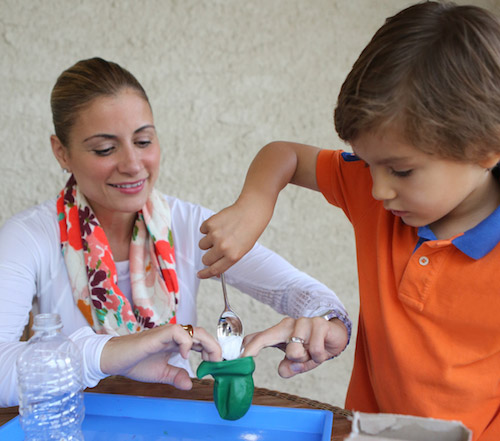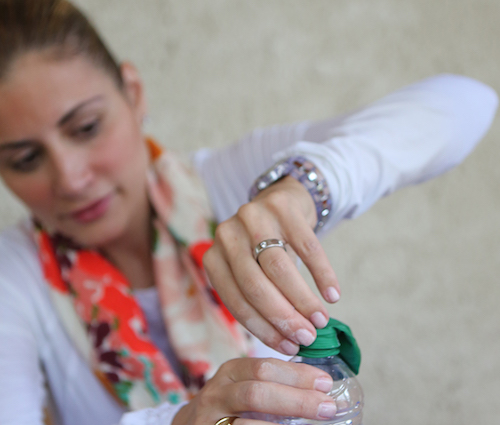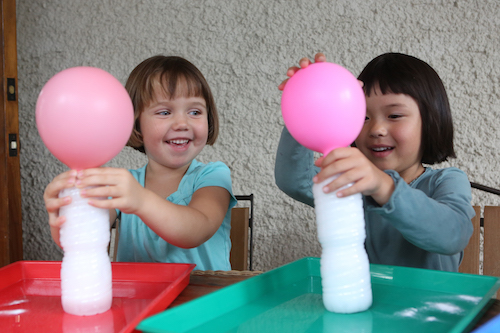Whether things change color, change texture, or send bubbles shooting into the air, chemical reactions are a fun way to introduce your children to science.
And Halloween is a perfect time of year to put chemical reactions to the test by transforming your kitchen table into a mad science lab. (Though this experiment can be done at any time of year.) Your little chemists will love mixing baking soda and vinegar together inside a bottle to inflate ghosts, monsters or any silly faces they’ve drawn on balloons.
Vinegar can sting unprotected eyes, so sunglasses or safety goggles are a good addition to this project.
You’ll Need
- balloons
- permanent markers
- an empty 16 oz plastic bottle
- vinegar
- baking soda
How to Do the Activity
Step 1: Let your child use permanent markers to draw ghost, monster or any sort of face on the balloons they want to inflate.
Step 2: Add 1/3 cup vinegar to the soda bottle.

Step 3: Hold the mouth of the balloon open and have your child measure 3 tsp of baking soda into the balloon. Don’t worry if it's not exactly 3 tsp.

Step 4: Shake the baking soda into the “bulb” or the main part of the balloon. Then, stretch the mouth of the balloon over the mouth of the bottle, keeping the main part of the balloon off to the side (so the soda isn’t dumped into the bottle right away.)
Step 5: Ask your child what they think will happen when you mix the baking soda and vinegar together.

Step 6: Have your child hold the balloon on the neck of the bottle and shake the soda down into the bottle, all at once.
Step 7: When the balloon is fully inflated, ask your child to feel the bottom of the bottle. Is it hot or cold?
Watch a video of this experiment in action!
The Science Behind the Fun
When you mix chemicals together to make something new, it’s called a chemical reaction. Baking soda is a chemical called sodium bicarbonate. Vinegar is called acetic acid. When you mix baking soda and vinegar, one of the new chemicals created is carbon dioxide gas.
Carbon dioxide gas is invisible, but your kids can watch it inflate the balloon on the bottle. They'll also know a chemical reaction is happening because they can see bubbles forming and feel a temperature change in the bottle.
---
You can find more experiments like this one at kitchenpantryscientist.com, and in my books Kitchen Science Lab for Kids (Quarry Books) and Outdoor Science Lab for Kids (Quarry Books).
© Quarry Books, 2016/Outdoor Science Lab for Kids
Featured Photos Credit: © Quarry Books
